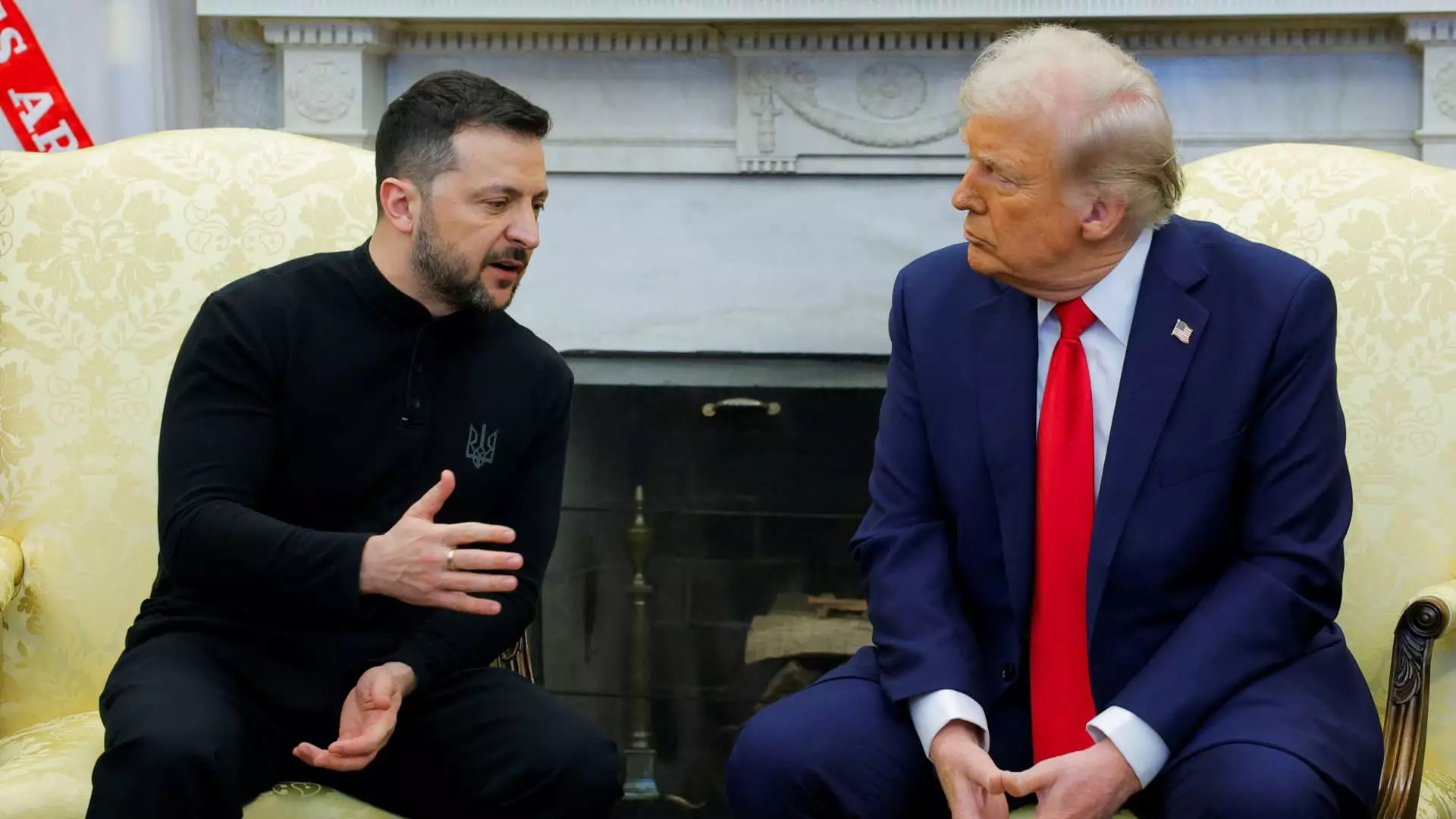In a significant though fraught moment, U.S. President Donald Trump met with Ukrainian President Volodymyr Zelenskyy at the Vatican—an event shrouded in historical and political gravitas. Set against the backdrop of Pope Francis’s funeral, the meeting represents more than a mere diplomatic encounter; it embodies the tension, anticipation, and complexities that have entangled Ukrainian sovereignty and international relations. While both leaders reportedly emerged from the encounter optimistic, one has to question whether their apparent cordiality is enough to drive meaningful change.
Zelenskyy’s characterization of the meeting as “symbolic” and “potentially historic” resonates with hope amid despair. After all, saying “yes” to peace in the hallowed halls of St. Peter’s Basilica is one thing; realizing that peace involves traversing treacherous ideological and geopolitical landscapes is entirely another. The picture of these two leaders leaning toward one another—a visual cue of urgency—contrasts sharply with the complicated history underpinning their interactions and respective national interests.
Isolation in International Diplomacy
What stands out about this meeting is the absence of aides—an artistic twist of intimacy reminiscent of a clandestine alliance. Yet, the lack of support suggests a troubling isolation as both leaders navigate their domestic pressures. For Trump, this meeting caters to his long-expressed desire for a swift resolution to the conflict, but his track record raises concerns. With proposals like recognizing Crimea as Russian territory—a point deemed unacceptable by Ukraine—his intentions appear as much about political maneuvering as genuine reconciliation.
Zelenskyy, on his part, is caught in a precarious tightrope act. On one side, he risks losing valuable international support by appearing accommodating to Trump’s demands; on the other, he must navigate the waters of domestic Ukrainian expectation, where any perceived capitulation to the Kremlin could mark him as a traitor in the eyes of the populace. The notion of presenting a united front while remaining ensnared in backroom negotiations suggests the duality of power as both leaders risk backlash from their respective bases.
Promises of Cooperation Amidst Dissonance
In the aftermath of their exchange, a blend of hope and skepticism emerges. Trump, for all his political idiosyncrasies, is undeniably in a position of influence. His recent claims about “productive talks” in Moscow and advocating for high-level negotiations between Kyiv and the Kremlin bring a peculiar synergy to the proceedings. However, the substantive differences highlighted in talks indicate real fissures in policy. The idea that a quick peace could materialize, especially with the vast complexities of sanctions and territorial integrity involved, showcases a naive exuberance that borders on recklessness.
Recent efforts to engage both parties have unveiled a disquieting reality. Not only are the lines in the sand being drawn, but they are also being fortified by both sides, leaving one to wonder if these talks are anything more than diplomatic theater. The stakes are palpably high; any perception of weakness from Zelenskyy could undermine his fragile legitimacy, while Trump runs the risk of alienating his support if he appears too soft on Russia. The imperative for cooperation feels urgent, yet one gets the sense that both leaders are operating in a state of inherent distrust.
The Burden of Expectations
What makes this encounter all the more challenging is the legacy of past interactions. The personal history between Trump and Zelenskyy is marred with distrust and barbs—a tension that hangs ominously over any claims of newfound cooperation. Zelenskyy recently described Trump as existing in a “disinformation bubble,” a comment that encapsulates the pervasive skepticism undermining their relationship. As the clock ticks and wars persist, they must transcend their adversarial roots and forge a collaborative pathway.
Symbolically donning military attire rather than formal suits, Zelenskyy’s sartorial choices send a dual message of solidarity with his fellow Ukrainians but also resentment towards the power dynamics that threaten their sovereignty. By opting for a casual military jacket, he asserts that his focus is the people and the fight for his nation rather than the superficialities of high-stakes diplomacy. Yet this choice may reinforce his enemies’ perceptions—nurturing narratives around his suitability as a leader in this turbulent time.
In a world where political expedience often supersedes moral obligation, this pivotal rendezvous between Trump and Zelenskyy positions itself as a bellwether moment. It speaks to the intricate and often disheartening matrix of international relations, where each encounter can be both a step forward and a setback—resonating with the very complexities of modern diplomacy.


Leave a Reply